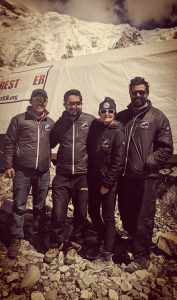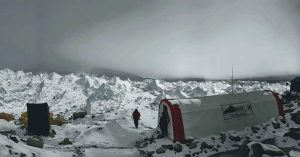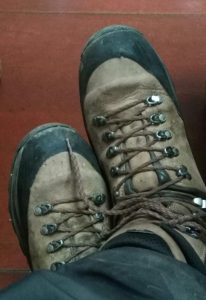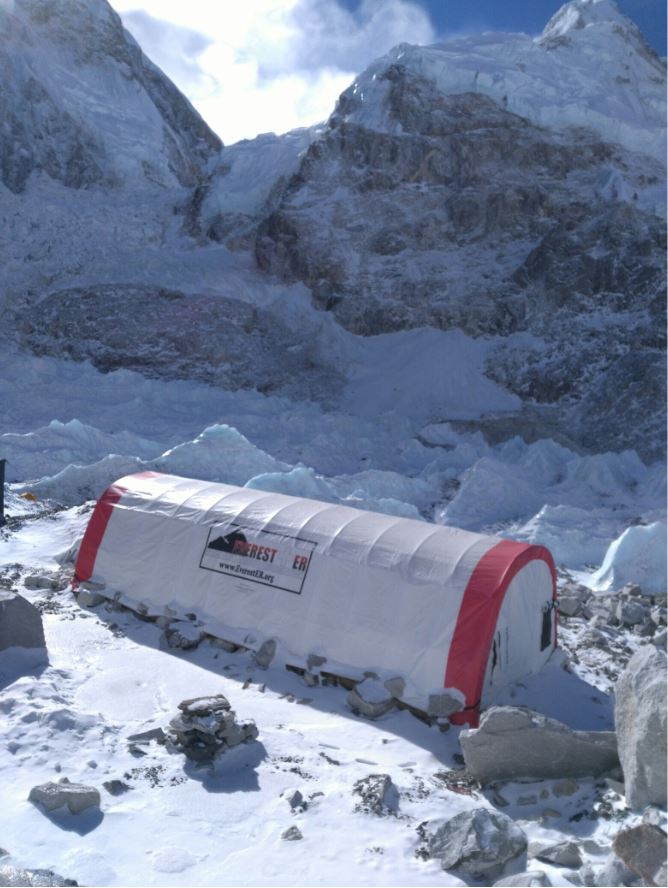Epilogue: Icarus, the monsoon, and the waning gibbous.
By: D. Deonarain
With the waning moon, the month was ending. Soon the monsoon rains would fall heavy across Nepal. They would come and send the children and dogs scurrying, dampen down the dusty roads until brown rivulets flowed to the gutters, and make swamps of the stubbled barley fields. They would soon bend sodden trees, make cry the pagodas and temples, and in time, end the climbing season on Everest.
I was already in Kathmandu. I had taken refuge in my hotel room, reluctant to leave. The rains had not yet come, but I was already distant from Everest and the Himalayas. I was suffering that strange disconnection that happens when your world and everything that is so familiar to you disappears in an instant. I didn’t want to see or speak with anyone. Solitude, however, was little solace at first. I found myself, like a caged animal, pacing and fidgeting in my small hotel room. I wondered whether Hemingway or Salinger had days like this… I chuckled and thought, “More like half a lifetime.”
Solitude, none the less, is the incubator of thought. Without it, it is too difficult to manage the overflow of the world and all the noises that come along with it. The Buddhist, so numerous in Nepal, know this all too acutely and spend a lifetime dedicated to this titrating the noise of the world. I tried to stay on this path of thought, to slow things down, to contemplate and digest all that had happened over my last two months in the Khumbu of Nepal.

Everest ER crew 2019 (from left to right): Lakpa Norbu, Pawan, Deirdre, and Dinesh

Everest ER in the face of the storm

Boots… on Everest
At first it all swirled together—faces, events, clinical cases, the lost lives, the emotions, sensations, suffering, elation… I stilled myself amid this deluge and found, with time, it ebbed without me trying to stem the flow. When the tide of these thoughts subsided, I stood on the shores of my own consciousness and embraced the thought that between the highs and lows of all the events of this season, I had followed a single path… that of the doctor. My dharma was not to climb, not to pick a path through ice and snow up to sky, but rather to help, heal, and sometimes save those who did. My journey to get here was forged long before I set my sights on Everest—my childhood in the Rockies of Canada gave me my first taste of mountain life, the wanderlust of my twenties removed the concept of a geographically static life, my early side branching into wilderness medicine seemed a natural choice, my training in mountain medicine—just a logical extension, my adopted life in New Zealand put mountains on my back porch again and filled me with imaginings of the great Hilary and Tenzing—onwards I climbed on my own ambitious route until I found myself standing at the peak, one of three clinicians selected to be a basecamp doctor at Everest ER. I feel that I have served my duty well. I have worn the patch of my Everest ER team with pride and done all I could to exercise my charge to its fullest capacity. I have worked alongside heroes and legends and amongst good friends. I make few apologies for the path that I have chosen or where it has led me, for it has as much chosen me as I, it. And to those who wish to find fault and seek to strike down tall poppies, either me or my kin or those who have sacrificed so much to try what seems impossible, I welcome you to come, but please… bring your climbing boots. 😊
POSTSCRIPT:
We all know the legend of Icarus. Countless have heard the myth recanted, have been reminded of the moral, that pride of flying too close to the sun, that thinly veiled teaching that ambition will outstrip the aspirant and they will fall… but maybe, just maybe, we have it wrong. Yes, Daedalus did warn his son, not to fly to close to the sun lest the wax holding his wings together should melt… and yes, as we know, this was in fact the cause of his demise, but we are quick to forget one thing: Daedalus also gave equal warning to his son not to fly to low, lest the sea mist dampen his wings and make it impossible to soar. This last warning, ignored by historians and moralists alike, strikes me as curious, in the least. It pleads as much so to the fact that the fate of the unambitious is no greater and no lesser than those who overreach. So reach—whether your goal is to climb, to heal, to write, or just to marvel in the presence of grandeur. Reach. Know where the limits above and below lie… but reach. Reach for challenge, for goals, for passions, for desires, for the things that fill our dreams…. Reach for opportunities in foreign lands, for love, for family, for that which you truly believe to be right. Reach for the snow in highest parts of every realm. Reach for the rooftop of the world. Reach for Everest…
“Never regret thy fall, O Icarus, of the fearless flight… For the greatest tragedy of them all, is never to feel the burning light.” -Oscar Wilde
Just another day in the Khumbu
Heli approach to Everest!

Dr Dinesh Deonarain is a Fellow of the Royal New Zealand College of Urgent Care who is in Nepal on assignment. He is volunteering for the Himalayan Rescue Association as one of the Everest ER base camp doctors for the 2019 climbing season. This blog follows his experiences in the high alpine of the Everest region.
Listen to the Profile in Urgent Care podcast with Dr Dinesh Deonarain.
If you would like to support Everest ER and the Himalayan Rescue Association, you can donate by bank transfer to: BNZ 02-0800-0196128-000. Also, you can follow Everest ER this season at www.EverestER.org
Boots on Everest – Episode 1
Boots on Everest – Episode 2
Boots on Everest – Episode 3 – Part 1
Boots on Everest – Episode 3 – Part 2
Boots on Everest – Episode 3 – Part 3
Boots on Everest – Episode 4 – Part 1
Boots on Everest – Episode 4 – Part 2
Boots on Everest – Episode 5
Boots on Everest – Episode 6
Boots on Everest – Episode 7
